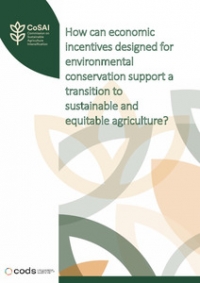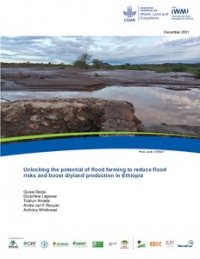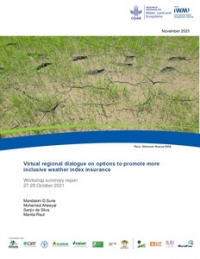They are called dehesa in Spanish, ahupua’a in Hawaiian, and satoyama in Japanese, and now Bioversity International and its partners are proposing a new, less poetic, but more internationally sounding, name:Socio-Ecological Production Landscapes and Seascapes (SELPS).
Still confused? We’re talking about the kinds of landscapes in which people and nature coexist in mutually beneficial harmony. Throughout history, local communities have gained from the landscapes they inhabit, benefitting from services such as clean water, rich soil, and abundant wildlife. In many cases, the diverse human use of such landscapes has come to maintain or even enhance their biodiversity and the ecosystem services they provide.
Yet, global development pressures—industrialization, urbanization, and globalization—are threatening the resilience of these socio-ecological production land- and seascapes. External shocks, ranging from extreme weather events to political unrest, can bring such systems out of balance, putting at risk the environment and people’s livelihoods.
New Toolkit Helps Communities Re-establish Resilience
In partnership with the Satoyama Initiative, Bioversity International recently launched a new toolkit that can help communities address threats to the land- and seascapes they depend on. The toolkit presents twenty indicators that evaluate the resilience of different aspects of ecological, agricultural, cultural, and socio-economic systems, posing questions such as whether the diversity of the local food system is very high, very low, or somewhere in between.
Using the indicators as a measuring stick, communities (or other groups of stakeholders) can evaluate current conditions across their landscape and establish a baseline of a landscape’s resilience, which is an important first step. Understanding current conditions subsequently allows communities to identify and reach agreement on priority actions for increasing resilience.
The process has proved to increase communities’ sense of ownership, their power over their environments, and their capacity to respond to social, economic, and environmental pressures and shocks, ultimately helping them to re-establish resilience.
Changed Practices and Attitudes Increase Resilience in Turkey
The resilience indicator toolkit has been tested by UNDP’s Community Development and Knowledge Management for the Satoyama Initiative Programme (COMDEKS)—an initiative aimed at promoting the sustainable use of natural resources in the landscapes rural communities live in.
COMDEKS put the toolkit to use in a number of locations, including the Datça-Bozburun Peninsula in Turkey, which represents one of the most pristine lowland forest and coastal landscapes in the Mediterranean. It is rich in flora, fauna, and wildlife. About 90 percent of the peninsula is protected in various ways, under natural parks, no-fishing zones, and special protection zones. Yet, despite these measures, the landscape is deteriorating and biodiversity decreasing due to increasing tourism and a growing population.
COMDEKS carried out a series of community consultations, using the resilience indicator toolkit to get local communities’ help to identify threats and problems in the area. Communities pointed out decreasing local, traditional agricultural production of figs and mastic, abandonment of traditional fishing and diving practices in favor of conventional products, destruction of valuable forests, and decrease of wildlife population.
Based on these community consultations, COMDEKS designed a series of interventions to improve the livelihoods of local populations while strengthening the resilience of surrounding ecosystems. So far, COMDEKS’ activities have resulted in a number of changes—uptake of more sustainable fishing practices, increased influence and recognition of local fisherwomen and their traditional practices, improved practices and increased incomes of local almond producers, promotion of ecotourism, and revived conservation efforts—all of which have contributed to re-establishing the balance between people and nature and improving resilience.
Distribution and Uptake
Bioversity International has identified local communities as the main users of the new toolkit, which will also be useful to organizers and facilitators of resilience assessment workshops. The toolkit has been developed as a collaborative activity under the Satoyama Initiative, which counts 184 members, including research institutes, universities, local NGOs, government agencies, indigenous groups, and others, who will facilitate the distribution the tool. There are plans to translate it into at least Spanish and French.
Download 'Toolkit for the indicators of resilience in socio-ecological production landscapes and seascapes' from the Bioversity website.


















